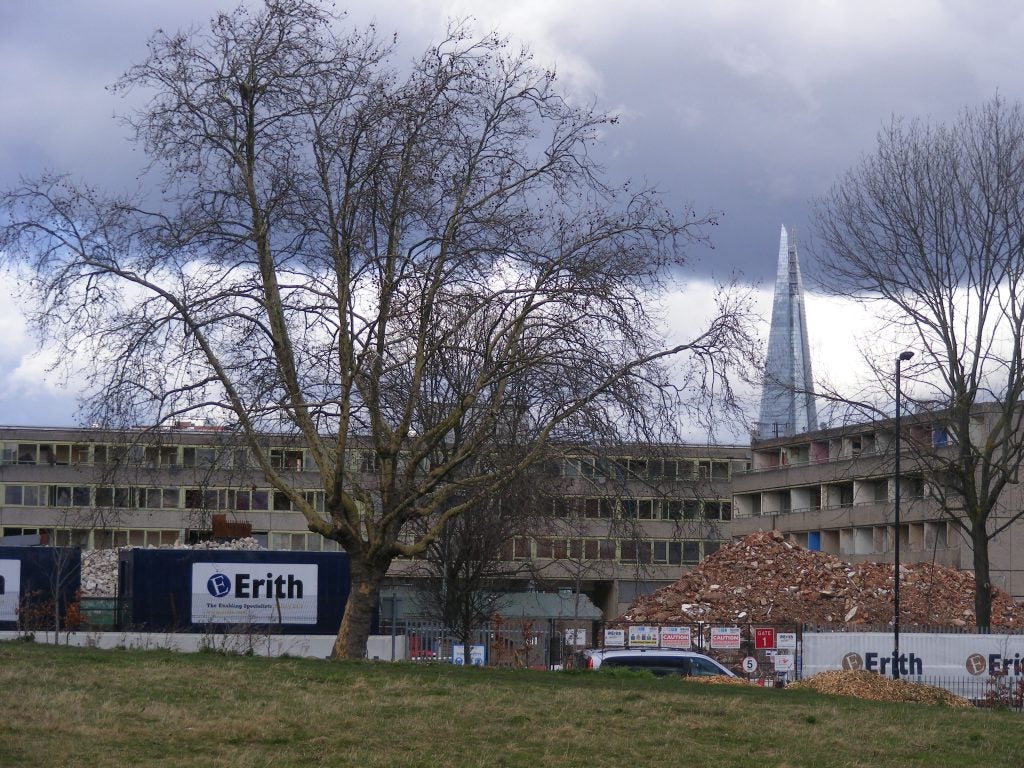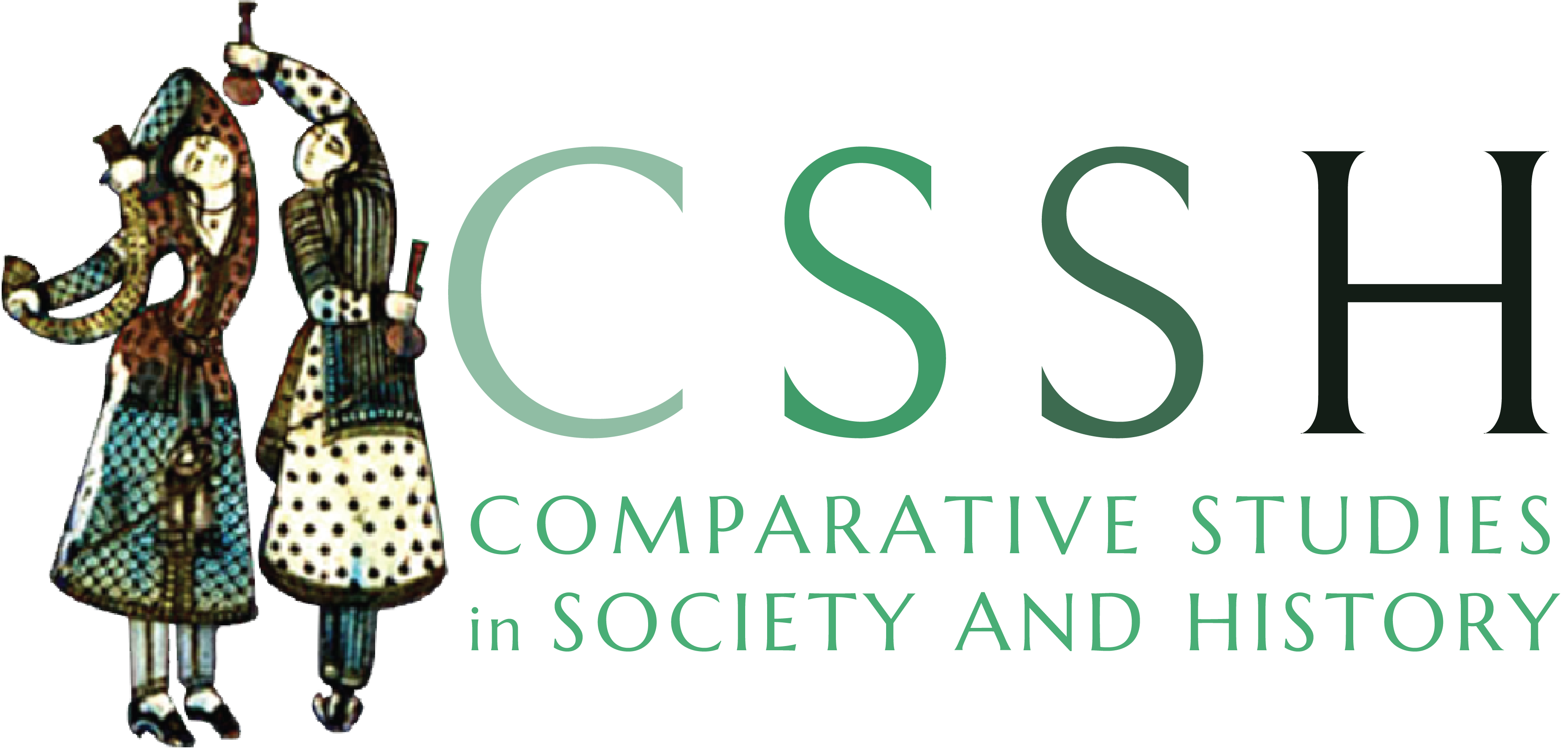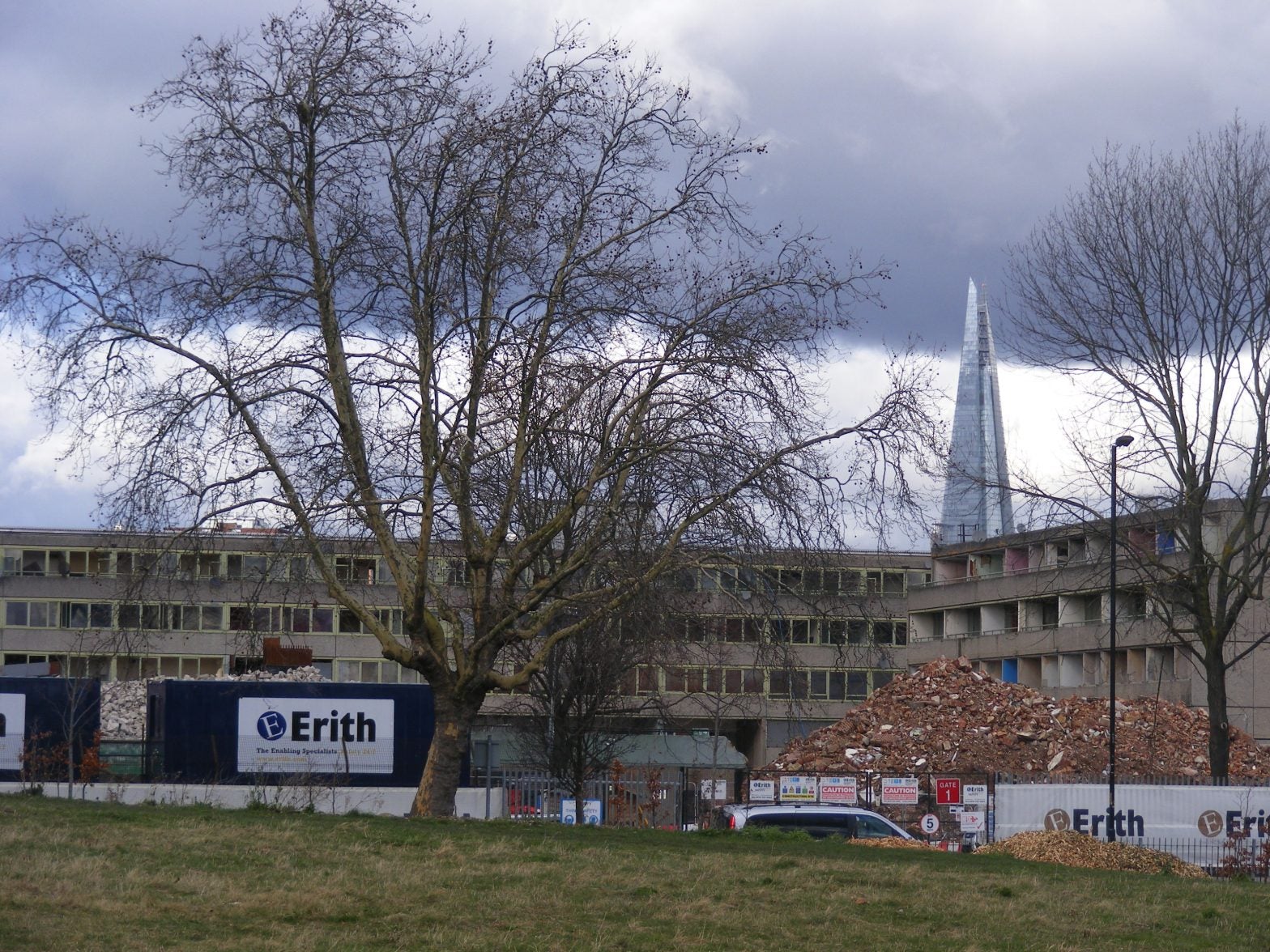In this “Behind the Scenes” essay, Catherine Alexander tracks how her understanding of British idioms and practices of thrift and thriving developed in complexity over time. Breakthroughs came via multiple avenues–chance encounters in early fieldwork, new projects suggesting fresh research questions, and provocative interdisciplinary engagements–culminating in the insights in her recent CSSH essay, “The Simple Bare Necessities: Scales and Paradoxes of Thrift on a London Public Housing Estate” (64-4, 2022). We see that the rewards of return are multiple, as renewed attention to a former field site also sheds light on how new trends in British housing and welfare policies are moralized and implemented.

What prompted my return to thrift and pondering how this humble, homely virtue I grew up with has become weaponized as a tool of statecraft?
Perhaps it’s best to start with the “ham in the handbag,” as one of the CSSH editors called this vignette. After all, this gets to the nub of how ideas of thrift are riddled with class, and it was one of my personal entry points to this essay.
My mother, schooled by wartime rationing, was a superb cook and ingenious at finding cheap (or free) excellent quality ingredients. That frequently meant offal or, in the case of ham, offcuts: the remnants of ham cooked on the bone, which, though still delicious, can’t be neatly sliced. But at university, I rapidly learned from most friends’ shocked disgust to serve up neither offcuts nor stuffed hearts nor rognons à la moutarde (kidneys in mustard sauce). In turn, I was dismayed by the processed foods—re-formed ham!—I encountered which seemed to needlessly combine cheapness and insipidity.
So it seemed wicked not to buy all the ham offcuts I found on the supermarket’s deli counter en route to meet the person who was to be central to my fieldwork. I don’t know what prompted me to suggest splitting my booty. But the broad grin with which she met the proposal went beyond acknowledging a gift. The exchange seemed to connect us across all the complexly classed and changeable ideas of what provisioning was about, reminding me that the same action or item might be cast as ingeniously thrifty or contemptible according to different ideas of what constitutes thriving. Not only is class usually central to these often-visceral responses, but multiple ideas of thrift can co-exist, clash, and change over time. Offal, after all, is now rather chic in foodie circles. The ham episode was a moment I’d always wanted to write about, but it took a while to get there.
Since 1989 I’d lived near and often cycled past the social housing estate I discuss in my CSSH article, but I hadn’t had any direct contact until, in 2002, the Borough Architect asked me to join a “task force” of local police officers, teachers, NGOs, and people living there to think collectively about what residents and the estate’s fabric needed to improve living conditions. Everyone was excited and positive. And then in 2005 that moment of possibility vanished. The Local Authority announced the cost of refurbishment was too high; the only solution, they declared, was to transfer the estate to a third sector housing association that would oversee its demolition, rebuild, and management.
What followed was brutal. Tenants who refused to be moved and owners who rejected low valuations of Compulsory Purchase Orders had to negotiate what was nicknamed “Alcatraz” to access their homes: a huge fence topped with savage metal spikes. One debate was whether refurbishment had indeed been possible instead of destruction. This sidelined a key point, which might have obtained in either case. By transferring the estate from Authority to housing association, “social rents” (which were 50 percent of market rates) moved to “affordable rents” (80 percent). Most tenants were priced out of returning.

I’d written about the estate’s recycling. But that was only part of the story, and besides, some fieldwork sticks to you. I couldn’t find the key to pulling together the various elements that seemed related. It turned out to be a combination lock opened by several of my interests converging—less a linear development of ideas than a spiraling return from other research themes I pursued in the interim.
The first was a comparative study of the phenomenon across much of the postwar world where the materialization of a social contract in mass-built housing projects had become out of sync with new-for-old political ideologies. The class war of enclosures and evictions was back in town. That comparison became a special issue (Alexander, Koch, and Hojer Bruun 2018). The disjuncture between politics and concrete was central to my ethnographic puzzle, but was not enough to account for how the people I met organized, experienced, and reflected on their lives.
Then Daniel Sosna and I co-edited a book on thrift (Alexander and Sosna 2022). Working on the introduction, which foregrounds how anthropologists have conceptualized thrift, and my reading of American historians of thrift and thriving, helped me to unlock what was happening on the estate and similar places. My CSSH essay developed as a companion piece to that introduction because I realized that my ethnography needed to be in conversation with the very different insights from historians, cultural studies scholars, and anthropologists. In turn, I hoped my essay would constructively complicate these accounts, which seemed to have developed relatively independently.
Like many anthropologists, I think ethnography can restore the complexity and constraints that people face as they try to navigate a course toward a good life as they understand it, making compromises and muddling through. Using another lexicon, this neatly describes the enmeshment of thrift and thriving as central matters of concern for many anthropologists. But historians’ perspectives alerted me also to consider how thrift operated at different scales (from household to state and planet) and to the mutability of this taken-for-granted idea. In turn, my ethnography suggested that different scales and forms of thrift occurred simultaneously, and often clashed, whether they were used by some residents to censure others or operationalized by state authorities.
My previous work on welfare histories (Alexander 2009) nudged me to go even further back with ears attuned to how low-income households have long been subject to moral castigations, especially as waged urban labor replaced a largely agricultural economy where people had access to common resources. Economic anthropologists delight in telling students that ‘economy’ is derived from the Greek for household (oikos) and rules (nomos). The self-sufficient oikos lauded by Aristotle describes a grand estate and lends itself to a cottage economy as encapsulated commonwealth. But it does not reflect the exigencies faced by impoverished urban households that must somehow weave precarious income together with kin care and welfare benefits. Moralized self-reliance regardless of capacity underscored a bourgeois Victorian anathematization of workers’ supposed delinquency and resounds equally stridently through neo-liberal discourses of citizen empowerment and responsible economic policies.
Anchored in long-term ethnography, I found histories and anthropologies of thrift productively defamiliarized each other. And that is how, via a four-way dialogue between historians, anthropologists, my ethnography plus histories of urban precarity alongside the estate’s creation and destruction, I developed the sense that very disparate kinds of households (with profoundly unequal access to and varied rhythms of incoming and outgoing resources) were at the root of inimical ideas of thrift and thriving.

In turn, this appreciation of how different kinds of households manage, allowed the exposure of how an oikos-centered model of thrift has drifted across scales to fuel austerity measures with an unholy combination of misplaced moral and fiscal rectitude. The story I told ended with the residents’ and tenants’ dispossession, although that is not the end (Lees and White 2020). Rather, my interest is in a wider persistent theme of how some ideas of thrift have legitimized savage cuts in state expenditure thus dismantling the means for how many get by and attempt to craft a decent life.
Britain’s Prime Ministers still deploy the tropes of good housekeeping and balancing books, presenting austerity as a homely virtue at a national scale, eliding differences between a state and households of any hue. Attempts to evict the last tenants also continue. The Local Authority’s minutes of June 2022 record, “It is acknowledged that compulsory purchase will interfere with the human rights of those affected,” but assert that there is “a compelling case in the public interest.” Perhaps the question that lingers is, which public is being served and which excluded?
References
Alexander, Catherine. 2009. Illusions of Freedom: Polanyi and the third sector. In Market and Society: The Great Transformation today. Eds. Chris Hann and Keith Hart. Cambridge: Cambridge University Press.
Alexander, Catherine, Insa Koch and Maja Hojer Bruun, eds. 2018. Moral Economies of Housing. Critique of Anthropology, 38, 2: 121–41.
Alexander, Catherine and Daniel Sosna, eds. 2022. Thrift and Its Paradoxes: From Domestic to Political Economy. New York and Oxford: Berghahn Books.
Lees, Loretta and Hannah White. 2020. The Social Cleansing of London council estates: everyday experiences of ‘accumulation by dispossession’. Housing Studies, 35(10): 1701-1722.
Catherine Alexander is currently Professor of Anthropology at Durham University. Amongst other topics, she has published on changing property regimes, wastes, thrift, and the built environment in Kazakhstan, Turkey, and Britain. Her most recent book, Thrift and Its Paradoxes: From Domestic to Political Economy, is co-edited with Daniel Sosna. She is currently researching different forms and fears of failure in the areas of fusion energy, environmental sustainability, and adult social care from individuals to different framings of state and market failures.


